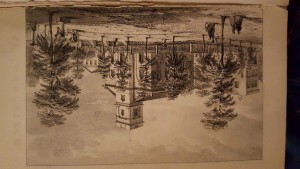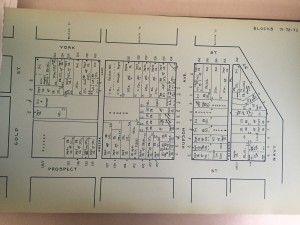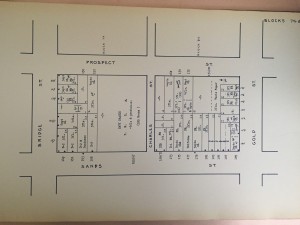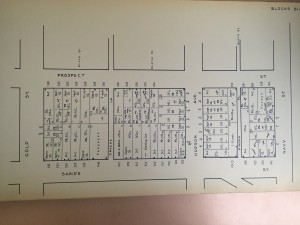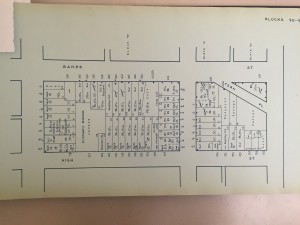Category Archives: Uncategorized
Darya, Kevin | Annotated Bibliography : History. Built Environment
- Abbott, Berenice. Talman Street. 1935 Digital image. Http://digitalcollections.nypl.org/
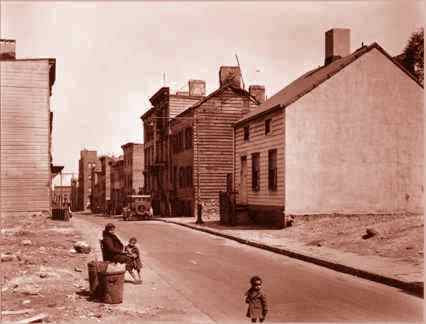
- “Farragut Area Evictees Will Keep Fixtures.” The Brooklyn Daily Eagle 20 Dec. 1946: n. pag. Web.
- Downtown Brooklyn Neighborhood Study. New York: n.p., 1941. Print.
PDF File: AnnotatedBibliography
Annotated Bibliography: Public Transportation
Post-Site Visit Reflection
It was interesting meeting a NYCHA representative, property manager Cyriaca Decaille, and learning about how the people in the Farragut Houses live. I didn’t know, for instance, that their rent was tied to their income, and I didn’t know that there was a long waiting list to get into the projects. It was also really interesting going inside a building and seeing a lobby. I found it kind of depressing. I live in a kind of “project” myself—Stuyvesant Town in Manhattan, much in the news lately—but our lobbies and hallways are much more inviting.
I enjoyed learning about the services available to the Farragut Houses residents, everything from tutoring to elder care. I was impressed—though not surprised—to hear about all the work that goes into maintaining a complex of this size. Ms. Decaille answered a wide variety of questions about everything from safety to apartment sizes to education in the area, all of which gave me a fuller understanding of the community. Unfortunately she was not able to answer my questions about public transportation in the neighborhood (she said, “I don’t know; I drive!”). I had hoped to find out which subways stations most residents used, whether they commuted to work by subway, whether they tended to work in Brooklyn, Manhattan, or another borough, whether the local stations were convenient, and whether the neighborhood was well served by public transportation. Although these questions weren’t answered, the visit was enlightening in other ways.
One thing I’m very interested in, in addition to transportation (my hobby!), is gentrification, the sharp divide between rich and poor—seen so clearly in the Farragut Houses/Vinegar Hill/DUMBO neighborhood. Ms. Decaille addressed some of this when she talked about the availability of jobs, the neighborhood schools, the lack of a nearby supermarket (something I had already read about in The New York Times), and the sharp dividing line between rich and poor neighborhoods. We also heard about it in the WNYC radio program we listened to and many articles exist online, including one in the New York Daily News titled “Life of Poverty and Fear in Brooklyn Housing Project for Those in Shadow of Wealth.” This is a problem throughout the city, and an issue I care about deeply myself. I hope the residents of Farragut Houses and their wealthy DUMBO neighbors can find ways of bridging the divide.
Annotated Bibliography”Demographics”
Annotation
post site visit Farragut #3
This was the third visit to the Farragut houses but then we had a NYCHA representative who was the building manager fr the project houses. She gave us a tour around the Farragut houses and we went inside of the houses for the first time and saw what the conditions were. The conditions of the building as I observed were average compared to other project, and well maintained. We were able to ask he questions about the buildings and NYCHA that we couldn’t find online and with the information she provided us, will help us with our research.
Post visit #3
After the third time we went to Farragut House, with the NYCHA staff, I got more understand about the property, One from many additional information that we got was we got chance to get in into one of the building and observe the lobby. Even though the officer of the NYCHA could not give me more information about the crime and safety, the information that she gave to all of us should be very helpful for most of us for our research.
Annotated Bibliography- Built Environment Group
Post site reflection #3
Our third site visit to the Farragut houses with the property manager, Ms. Cyriaca Decaille was a success. I got so many of my questions answered and she was very informative with all the answers for all of the questions being asked. This visit will help with my group project a great deal since we are focusing primarily on the current and future developments of NYCHA buildings especially the Farragut buildings and the way of life and living conditions in these buildings. Some of the things I learnt during this visit are as follows:
- If the empty land is used to build brand new houses and the old buildings are dilapidated crime rates in the area will be reduced and it will encourage other communities of people to go and live in that area and it wouldn’t just be the Farragut houses residents.
- There are residents sitting on the lobby to protect the buildings from vandalism since they are not always enough security. This is called “resident watch”
- There are new leaking in the top floors of the buildings and repairs to all the apartments will most half as much it will cost to build an entire new building
- During the summer they are newly placed recycle bins, LED lights, and all the bulbs were changed
- There are coming with new ideas to improve the current situation called the next generation NYCHA
- NYCHA representatives always refer clients to other programs in the case of eviction. They do no not want anyone on the streets. They may refer elderly clients to access a ride or they also have a social services department for issues they cannot handle on the site.
- They are currently 45 employees The staff members includes maintenance crew which is inside the building, care takers which deals with the grounds and garbage, workers of the main office including manger, assistant manger and secretary.
- Everyone who works in the NYCHA building needs to take the civil services exam and residents are not allows to work in the office because of sensitive information.
- Maintenance is always an issue because they need more staff with the amount of repairs that are needed to be done everyday.it is just impossible.
- When asked about the crime rates the manager said they has only been a couple of issues
- To get into one of the Farragut houses NYCHA does not do a credit check, income and background check.
- They do not accept section 8 vouchers and since they have so many applications at some point they will need to stop applications at some point to re zoom.
- At one point in history town houses were built and a lot of residents that lived in Farragut houses got into those apartments as long as their credit was on tract and the residents also obtained help on their mortgages
- Subsidized housing
- Residents has to sign a one yr. lease
- No resident has ever been kicked out based on their income. They just need to provide their pay stubs yearly and inform the staff of all the necessary changes such as getting married or unemployment or whether they got a raise or promotion. Residents needs to sign a release from in order to check their income. However if these changes happen in the middle of the year they would not be any changes in their rent.
- Garbage needs to be properly disposed of and put into the incinerator and not be thrown out of the window.
- She mentioned that there is another very nice housing complex in Williamsburg but residents hardly move and has been there since it was built.
- The property utility is very high and it is in the millions
- If residents wants AC it has to be permanently installed and cannot be taken out. They are also apartment inspection to check if the fire alarms are effectively working. NYCHA has its own parking lot that is 60 spaces for $70 per year.
- Residents has a designated spot for a flower or vegetable garden and they also get award for the best garden and their hard work
- No dryers are allowed in the apartments because it is a fire hazard but there is a private owned Laundromat that has a dryer.
- If residents cannot afford to pay their rents they are referred to other programs such as CAMBA. Residents are referred to CANBA because of nonpayment so they would go to the program and bring the required documents. In addition since NYCHA is federally funded the goal is not to put anyone out but to make referrals.
- When applying for NYCHA housing residents are allowed to pick the borough but not the specific place they want to live.
- The manger discussed that there is hardly anywhere for residents to shop and they were promised a supermarket somewhere in or around the navy yard. She also reiterated that change is big and often people feel lost because the rich people is on one side of the neighborhood and the poor is on the other.
- NYCHA property is tax-free and it depends on the person’s income to be qualified to live in one of the apartments. To be qualified it is 30 % of your gross income and not net. There are two bedroom apartments which are called studio apartments and it goes all the way up to 3,4,5 and 6 bedrooms because in the earlier days people had more children. All utilities are included in the rent and as soon as someone moves out a new person gets called in the office for an interview.
- Families are not allowed to have BBQs outside on the grass only on family days and they also require permission and fill out additional paper work b because it is a safety concern if someone gets hurt because it is a private property.
- Basketball tournament needs insurance and forms needs to be filled out in order to play in the playground.
- Inside of the buildings they are cameras, elevators and wheel chair access she also explained that apartment upgrades are not encourages because as soon as that family leaves they have to put everything back to standard because they do not want to create any conflict as to why some apartments look nicer or are fancier than the other.

